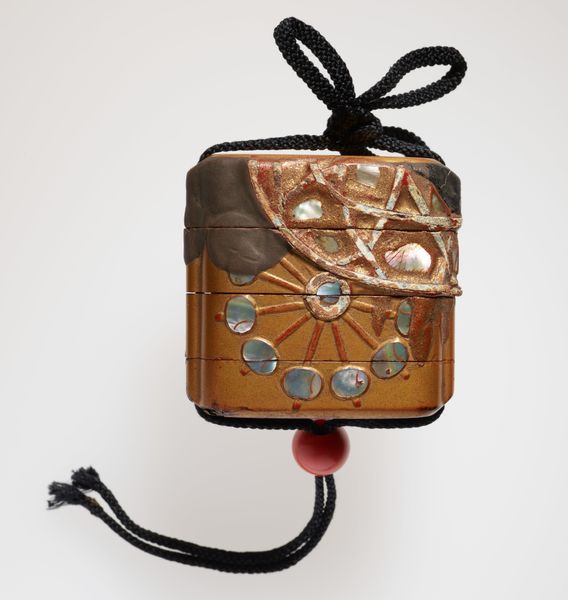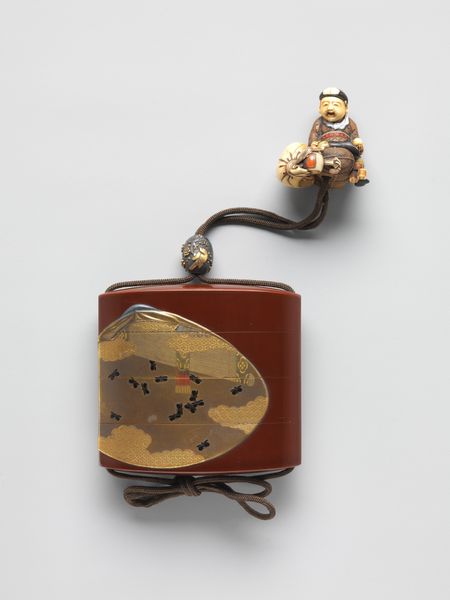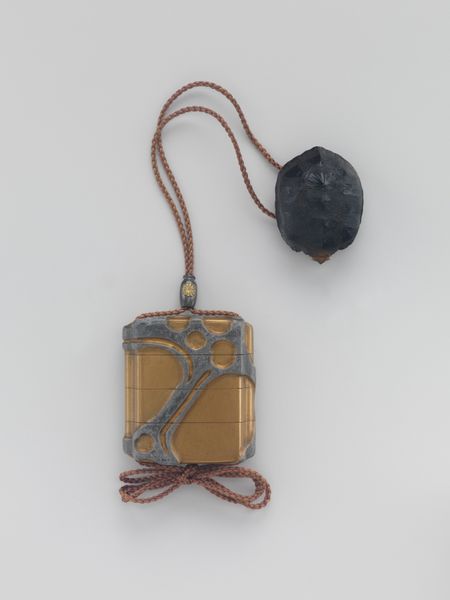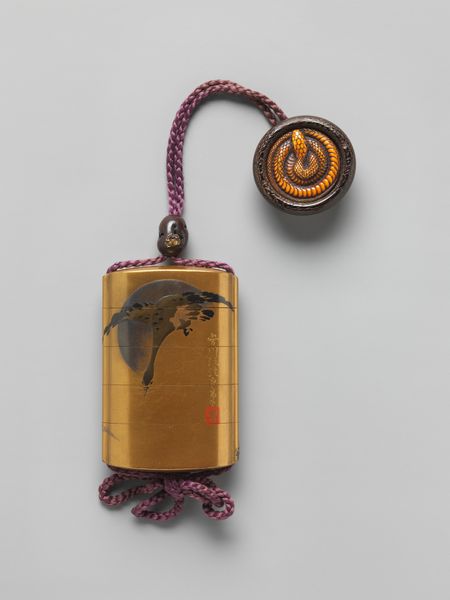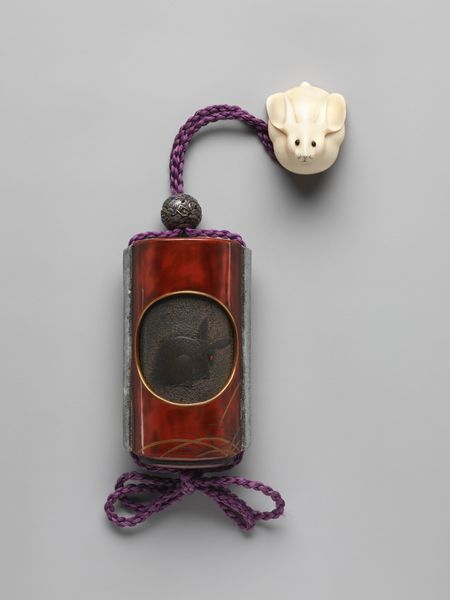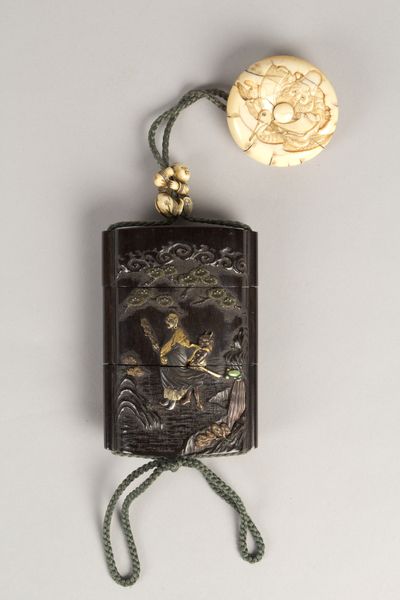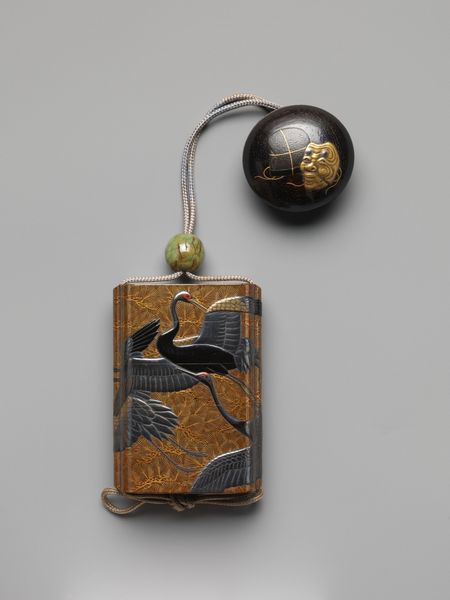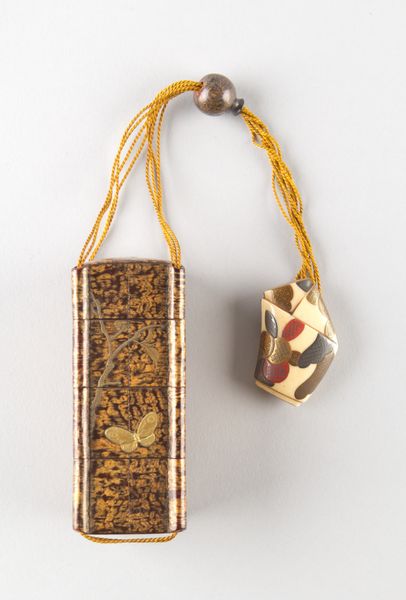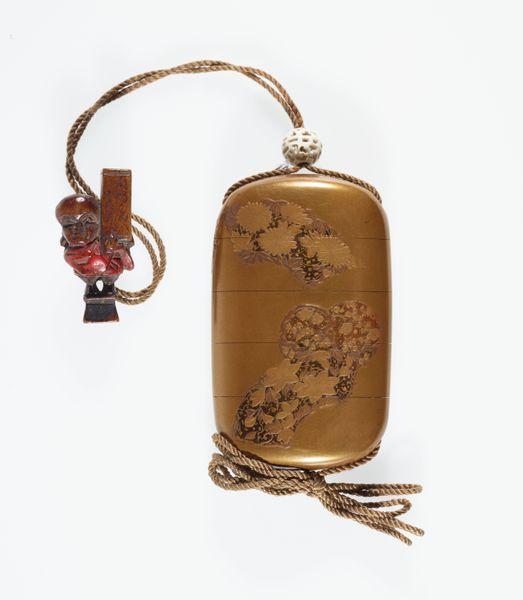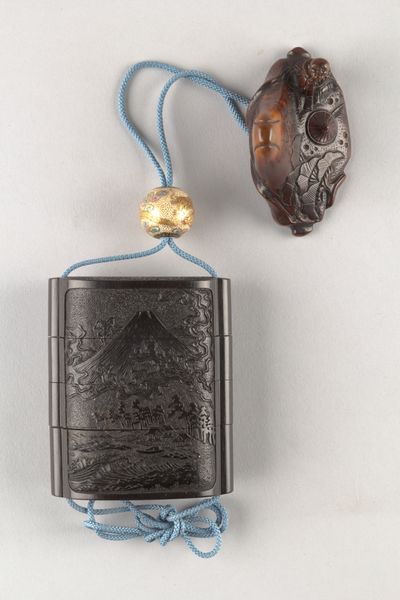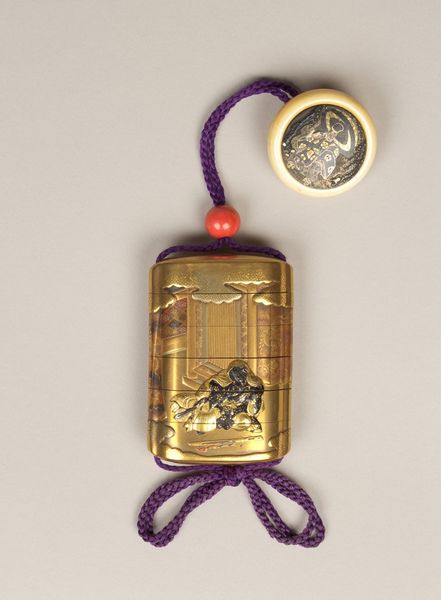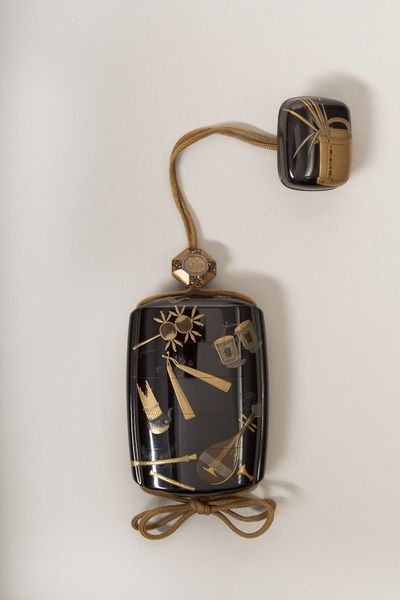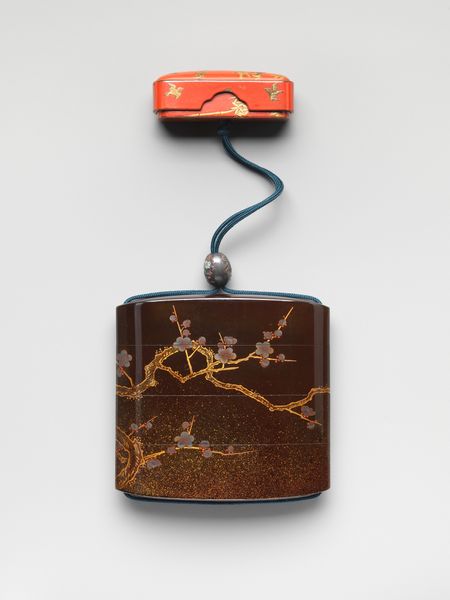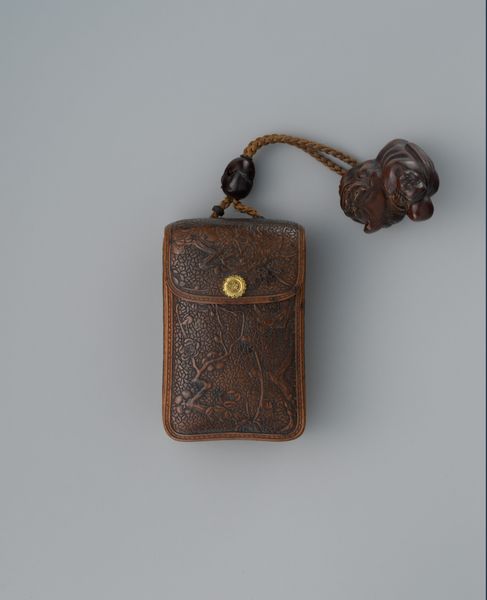
#
asian-art
#
japan
#
decorative-art
Dimensions: H. 3 in. (7.6 cm); W. 2 3/16 in. (5.5 cm); D. 13/16 in. (2 cm)
Copyright: Public Domain
This is a 3-inch high inrō, or case, with a design of a bean vine by Mochizuki Hanzan, an artist who lived in the second half of the 18th century. The inrō is a testament to the meticulous artistry and cultural values of Edo period Japan. In this era, Japan was experiencing economic growth and cultural flourishing, while also ruled by strict social hierarchies and isolationist policies. The inrō, worn suspended from the obi, the sash of a kimono, acted as a status symbol for the samurai and merchant classes. Hanzan’s delicate rendering of the bean vine, with its symbolism of growth and prosperity, reflects the intricate relationship between nature and society. The inrō transcends utility to embody the values of beauty, status, and cultural identity.
Comments
No comments
Be the first to comment and join the conversation on the ultimate creative platform.
